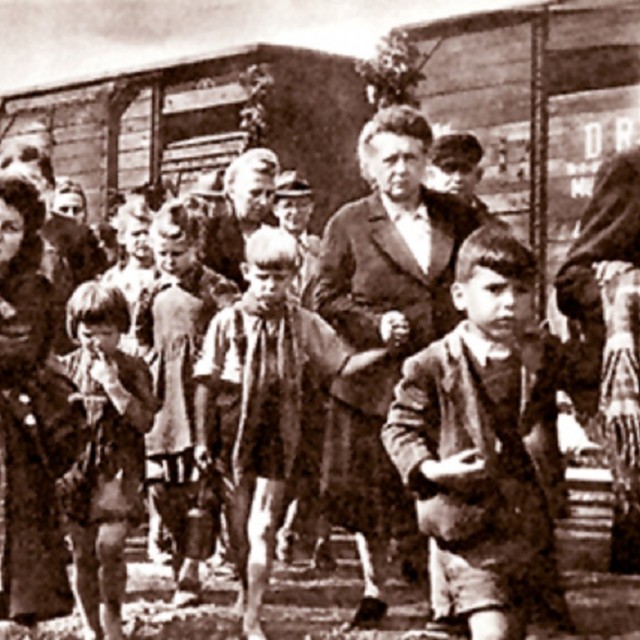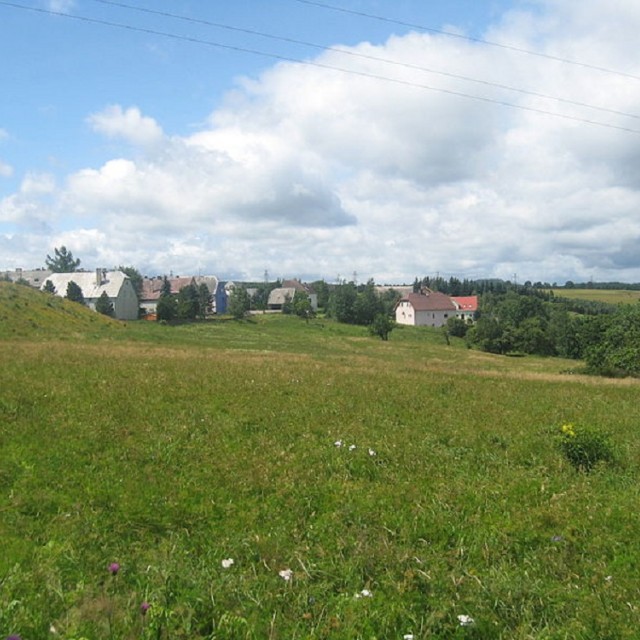Country Gone Wild
Jiří Stránský’s father was in frequent contact with the Czech National Council towards the end of World War 2. The body authorised him in May 1945 to supervise the eviction of the Sudeten Germans in north Bohemia, in particular in Hora Svatého Šebestiána. Jiří Stránský eventually convinced his father to take him along for his north Bohemian mission. “My father’s mother was an Austrian and she brought him up in the German way. As a boy, he used to go to his relatives in Krušné Mountains (Egerland in German) for holidays where he learned the Egerlander dialect of German, which is incomprehensible to most Germans. The worst and wildest expulsion of Sudeten German on our western border took place around Hora Svatého Šebestiána after the war.” Jiří who was fourteen years old at the time witnessed events that he described in his lifetime achievement, Zdivočelá země (Country Gone Wild) many years later. The villagers of Hora Svatého Šebestiána invited Jiří Stránský as the author of the very popular TV series, Zdivočelá země, to Hora Svatého Šebestiána for a discussion. “I thought that the meeting would not be a very pleasant one, because I didn’t spare the local Czechs in the screenplay. Some three hundred people gathered in the community centre, locals and folks from the villages around as well.” The discussion took maybe two hours; the visitors asked primarily about the connections between the Zdivočelá země storyline and historical reality. At the very end, an old gentleman took the floor and Jiří Stránský anticipated his speech with a lot of suspense. “But what he said was amazing: ‘Most of all, we should thank Mr. Stránský for being so kind to us.’ And he was right – I never exaggerated when writing Zdivočelá země, actually I would always soften things somewhat.”
Hodnocení
Abyste mohli hodnotit musíte se přihlásit!
Trasy
Příběh není součastí žádné trasy.
Komentáře

Sudeten Germans
The term Sudeten Germans has been used since the early 20th century in reference to the Czechoslovak citizens of German ethnicity who inhabited the borderland of today’s Czech Republic, also known as Sudetenland, from Middle Ages to the latter half of the 1940s. The German colonisation of the borderland started under the rule of the House of Přemysl when Germans came upon invitation of Czech governors to cultivate the sparsely inhabited Czech borderland. Czechs lived predominantly in lowlands along rivers and were inexperienced when it comes to living in mountain areas. The peaceful Czech-German coexistence escalated with the advent of nationalism in the 19th century. Nazi Germany took advantage of the protests and resistance of the Sudeten Germans at the end of the 1930s to promote its own policy and territorial expansion. Sudetenland was annexed to the German Reich based on the Munich Agreement, Sudeten Germans became its full-fledged citizens and served in the Wehrmacht during the war. Following the World War 2, almost three million Germans were expulsed on the basis of the Beneš Decrees. According to some sources, at least 700,000 Sudeten Germans had fled or been evicted by August 1945. According to the figures from the report of a joint committee of Czech and German historians, between 19,000 and 30,000 of them died during the process. They fell victims to the locals who took revenge on the innocent for the harms they sustained during the war. Some 3,000 villages, parts of villages and isolated dwellings ceased to exist; 70,000 small businesses and most associations were dissolved by 1947; family farms of up to five hectares ceased to exist (there had been 350,000 of them in the borderland). The up and coming communist regime concentrated primarily heavy industries, mining industry, thermal power plants, military zones and social care institutions in the vacated areas. The appearance and nature of the Sudetenland, which used to work economically very well before, changed irreversibly after those developments. The process of re-settling the borderland took approximately thirty years.



